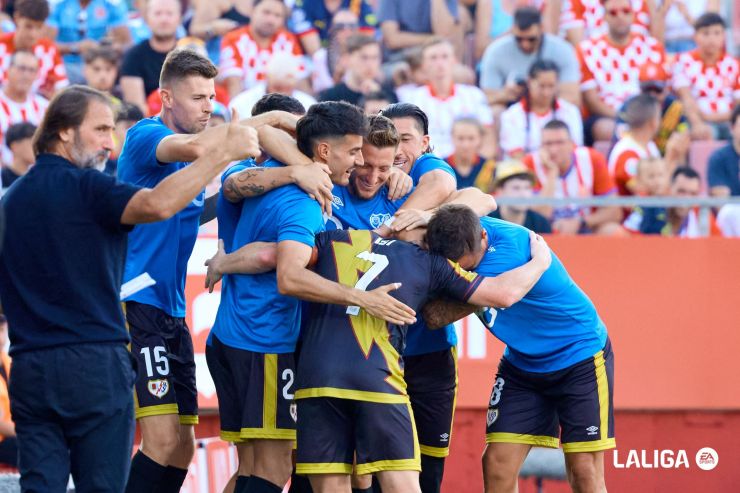News
WED 20.08.2025
The 2024/25 season was one of the most successful in Rayo Vallecano’s history, as the team from Spain’s capital city qualified for the UEFA Conference League. That means European football is returning to this unique neighbourhood of Madrid, and it’s worth exploring some of the most fascinating details of the club’s history.
Rayo Vallecano have played in Europe once before
Rayo Vallecano aren’t complete strangers to European football. In the 1999/2000 season, they’d just been promoted back into LALIGA EA SPORTS and finished in a highly creditable ninth position under then-coach Juande Ramos. An excellent fair play record over those 38 games brought qualification for the following year’s UEFA Cup, as one of the teams with the fewest yellow and red cards in all of Europe. After seeing off Constel·lació of Andorra 16-0 on aggregate in the qualifying-round, they then eliminated Molde, Viborg, Lokomotiv Moscow and Girondins Bordeaux to reach the quarter-finals where they fell to fellow LALIGA EA SPORTS side Deportivo Alavés, who went on to reach the competition’s final that year.
The story behind the iconic red stripe
Rayo Vallecano’s distinctive jersey with its diagonal red stripe is one of the most recognisable in Spanish football, but the club originally played in plain white during its first decades after its founding in 1924. In 1949, after earning promotion to the Tercera División, Rayo Vallecano entered into an affiliation agreement with neighbours Atlético de Madrid, which required that the team incorporate red into its kit. The club’s directors admired the look of Argentina’s River Plate, and in the early 1950s they adopted the diagonal sash. In recent years, the club has even reimagined the stripe in rainbow colours to highlight support for a range of social causes.
A true ”barrio” club
Rayo Vallecano are known as a “barrio” club, meaning a neighbourhood club. Whereas Real Madrid and Atlético de Madrid attract fans from across Spain’s capital, Rayo Vallecano’s fanbase mostly hail from the neighbourhood of Vallecas, where they play. The club’s identity is deeply tied to this working-class district and its supporters take pride in their reputation for passion, community spirit and a fiercely independent outlook that sets them apart from the city’s giants.
The movement to save a neighbour from being evicted
Exemplifying this community spirit, the club was at the centre of a movement in 2014 to support an 85-year-old Vallecas resident, Carmen Martínez Ayuso, who had been evicted from her home. The case sparked outrage locally, and Rayo Vallecano’s players, coaching staff and fans quickly mobilised to help her. The club launched a special “Fila 0” (“Row Zero”) initiative to channel donations, while players, supporters and local businesses contributed funds to ensure she had a place to stay. “We cannot sit idly by, we are going to help this woman,” Paco Jémez, the coach at the time, said.
The stadium has just three stands
Rayo Vallecano’s stadium, the Estadio de Vallecas, is unlike most top-flight grounds, as it only has three stands. Behind one goal there is no terrace at all, just a wall and some of the neighbourhood’s apartment blocks rising above the pitch. There, some locals are even able to watch matches from their balconies. Opened in 1976, the compact 14,500-capacity stadium reinforces the sense that Rayo Vallecano truly are a community club, with football woven directly into the fabric of Vallecas life.
© LALIGA - 2025
